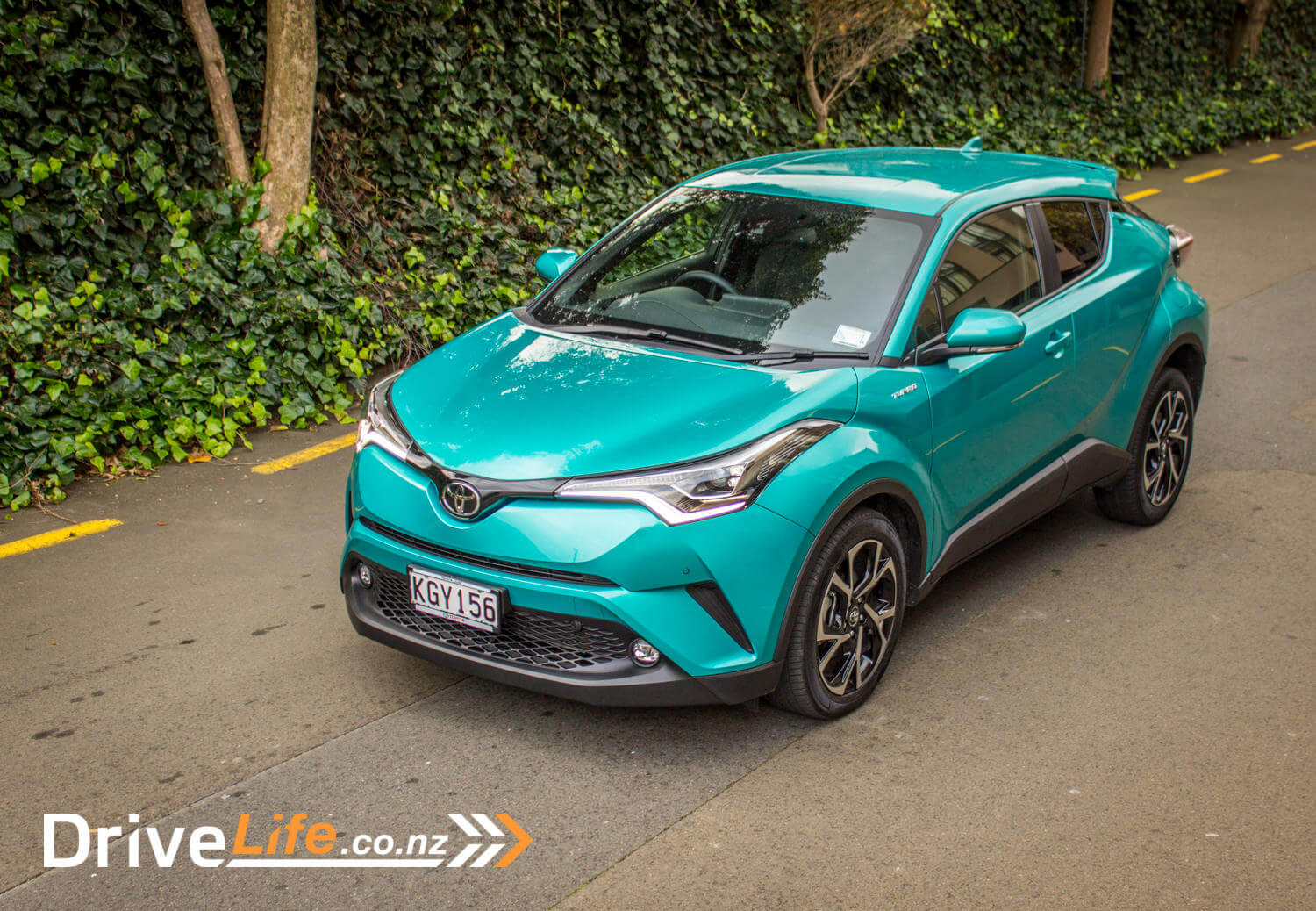Drive Life shot up to Auckland for the launch of the C-HR a few months back. Mostly it was the design that caught motoring journalists’ attention – eye catching to say the least.
On a one-day drive, the C-HR came across as a good handling, competent, compact SUV.
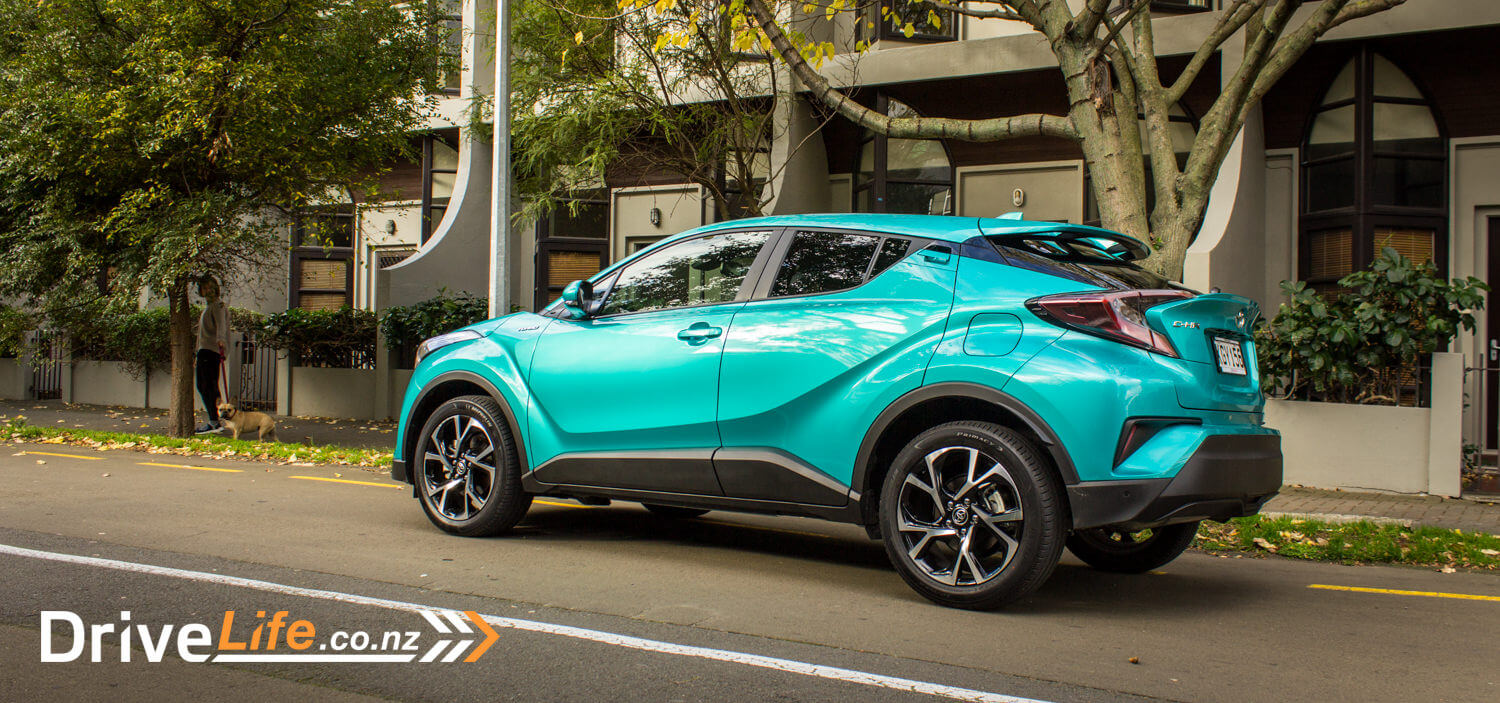
Remember that girl you went out with for one date? Things went well and you felt a good connection. Then you go away for a week and all the things you missed the first time drive you a little crazy.
Would this be the case with the C-HR? Only one way to find out; go on a week-long date.
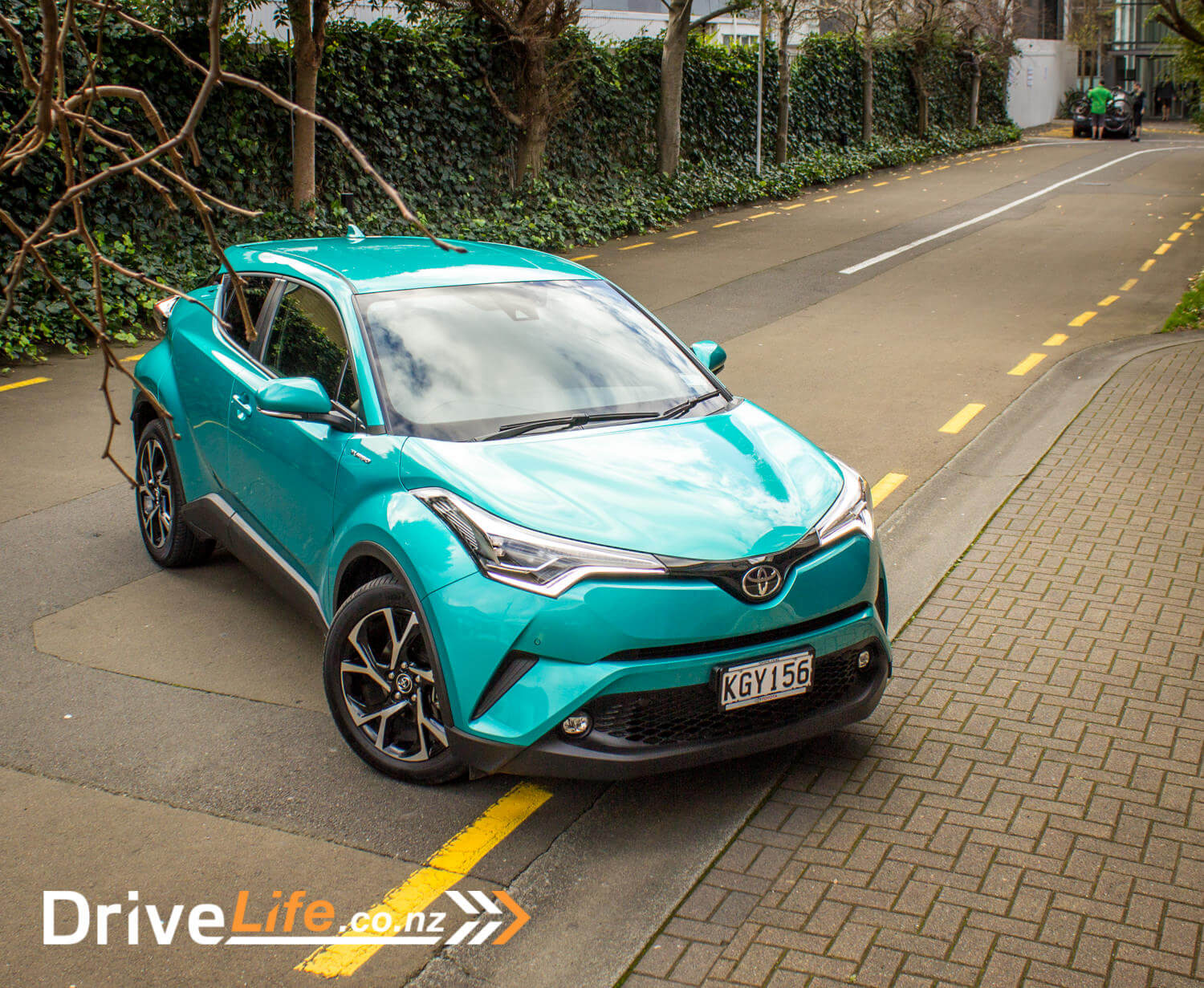
The Range
The C-HR is an all-new model – it slots in below the RAV as their smallest SUV. As far as the range goes, well things are pretty simple here: 2WD or AWD; that’s your choices. The 2WD model runs at $37,990 and the AWD $39,990. Both are powered by a 1.2-litre turbo 4-cylinder petrol engine, Toyota’s first use of this motor. While rated at just 85Kw, it does pump out 185Nm of torque. Both are fitted with a CVT transmission, with a 7-speed sport mode.
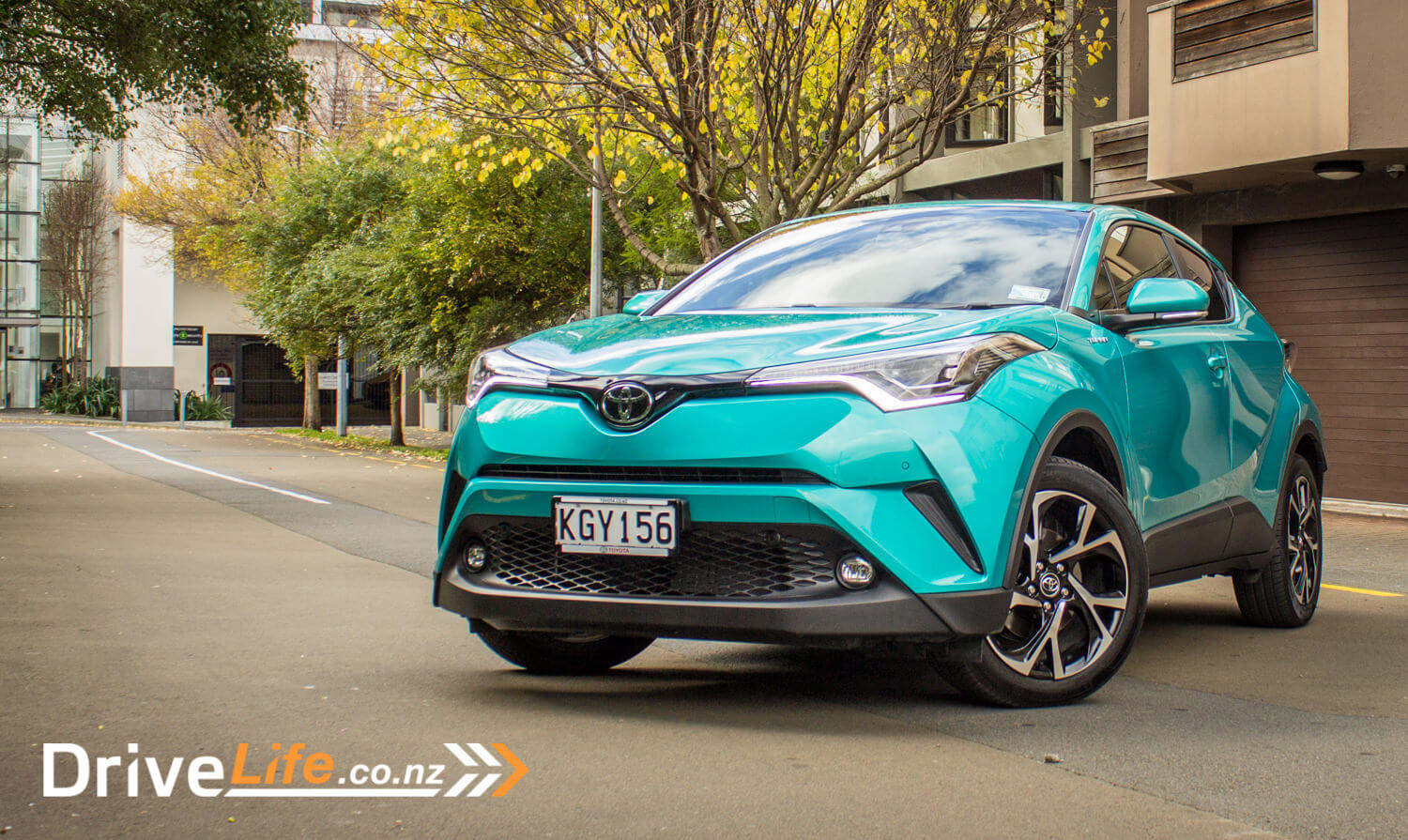
For your cash you get a 6-speaker audio system, built-in SatNav with SUNA traffic updates, a 4.2” driver’s information display, dual-zone AC, auto dimming rear view mirror, auto lights and wipers, auto-up/down for all windows, electrically folding mirrors, leather steering wheel, electric park brake with Auto Hold function, rear privacy glass, LED headlights, auto high beams, DRLs, LED tail lights, LED fog lamps, 18” alloys, sequential front indicators, and a 6.1” centre touchscreen display.
Safety-wise, you get Toyota’s Safety Sense package, which includes Pre-Crash Safety System, Radar Cruise Control, Lane Departure Alert, Rear Cross Traffic Alert, 7 airbags, Blind Spot Monitoring, Hill Start Assist, reversing camera, and front and rear parking sensors.
First Impressions
The C-HR comes in a range of 8 colours, some of them quite stunning. Sadly I expect most will be Shadow Platinum, or boring silver to you and me. The other colours are Crystal Pearl, Ink, Ruby, Sunset Bronze, Sun Fusion (yellow), Tidal Blue and lastly Electric Teal, which our 2WD test car was finished in.
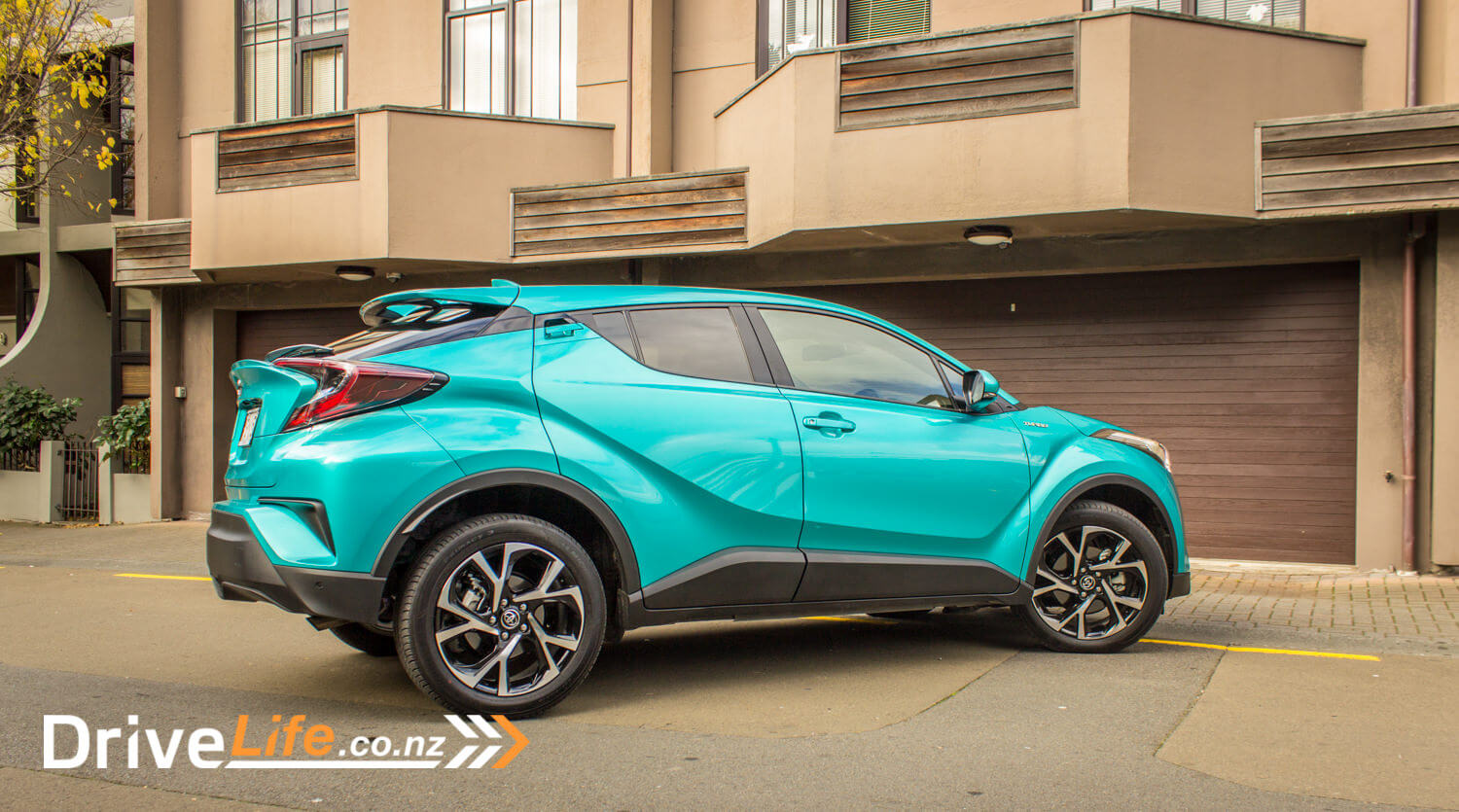
I have never had so many comments on a test car. In Electric Teal and with that space-age look, the C-HR drew comments from people all over the place, as well as just driving around – people on the motorway driving past would look at the car, and I could see them mouthing, “what is that?” as they went by.
To say the C-HR stands out is a major understatement. Someone commented it looked like it belongs in Pokémon, and I tend to agree. It’s like a Juke on steroids, but in a good way (on the outside, at least). Toyota have added sequential front indicators, and I cannot explain just how cool they are.
The rear of the car is a lot busier than I’d like, and looks quite fussy in places, but aside from the huge taillights, Toyota pulls it off.
The Inside
As I went to get into the car, the door wouldn’t unlock. I kept waiting, looking for a button on the handle, but then realised this space-age looking car has an old-school key. That was a surprise. The other thing with the ignition key is that the ignition slot on the steering wheel isn’t backlit, so at night you will spend some time trying to get the key in the hole.
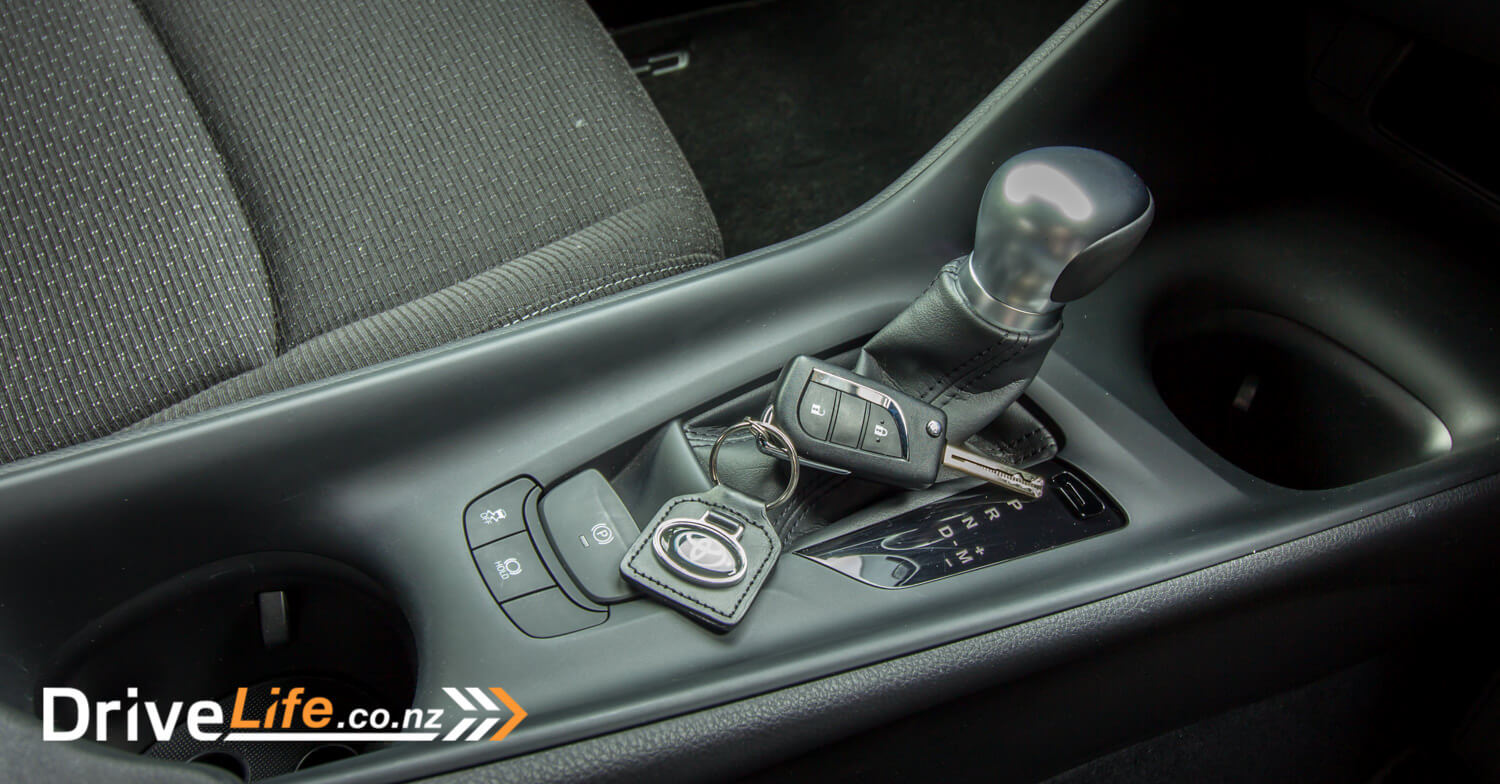
Toyota call the C-HR a ‘crossover coupe’ – I think you could call it the Batmobile. Not because it has guns and things, but because it’s all black inside – everything. Seats headlining, pillars, dash, all of the door panels. Adding to this is the back seat; while the outside design is awesome, this makes for tiny (TINY!) rear windows, and as you can imagine – a pretty dark rear cabin area. This is not a car you would want to have rear passengers in for an Auckland-Wellington road trip. Well you could, but they’d need to not have claustrophobia issues. In my notes, I wrote that it feels like a gothic interior, and I think that sums it up.
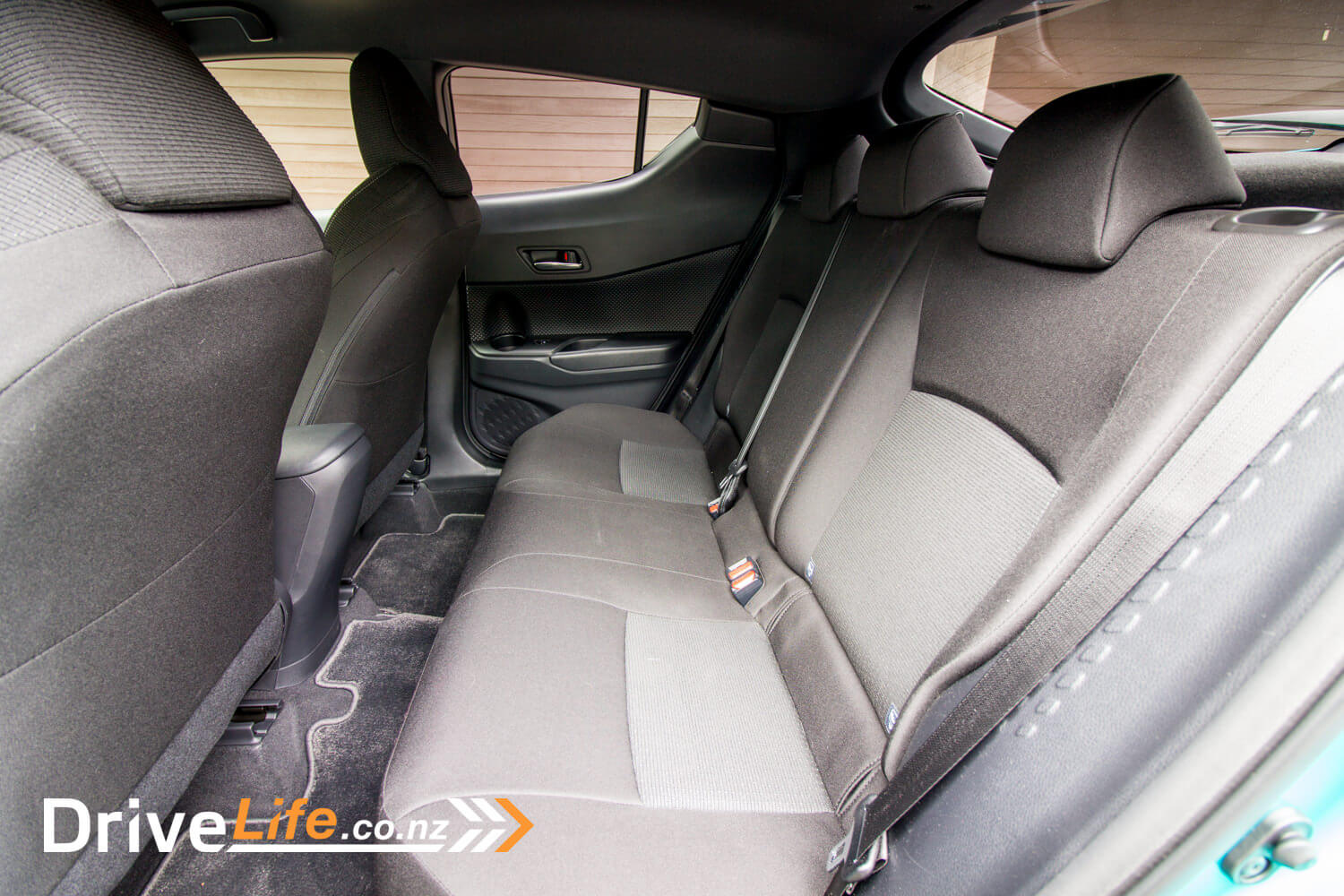
On to some good stuff. Audio quality is great; both bass and treble will impress you. The media system is a mixed bag. I found the media system a little clunky – it’s a 6.1” touchscreen, but has little (again, old school) physical buttons on each side. I think dumping the buttons and making the screen bigger would be an ideal move – remember, this is a futuristic looking car – it should be a bit more modern on the inside too.
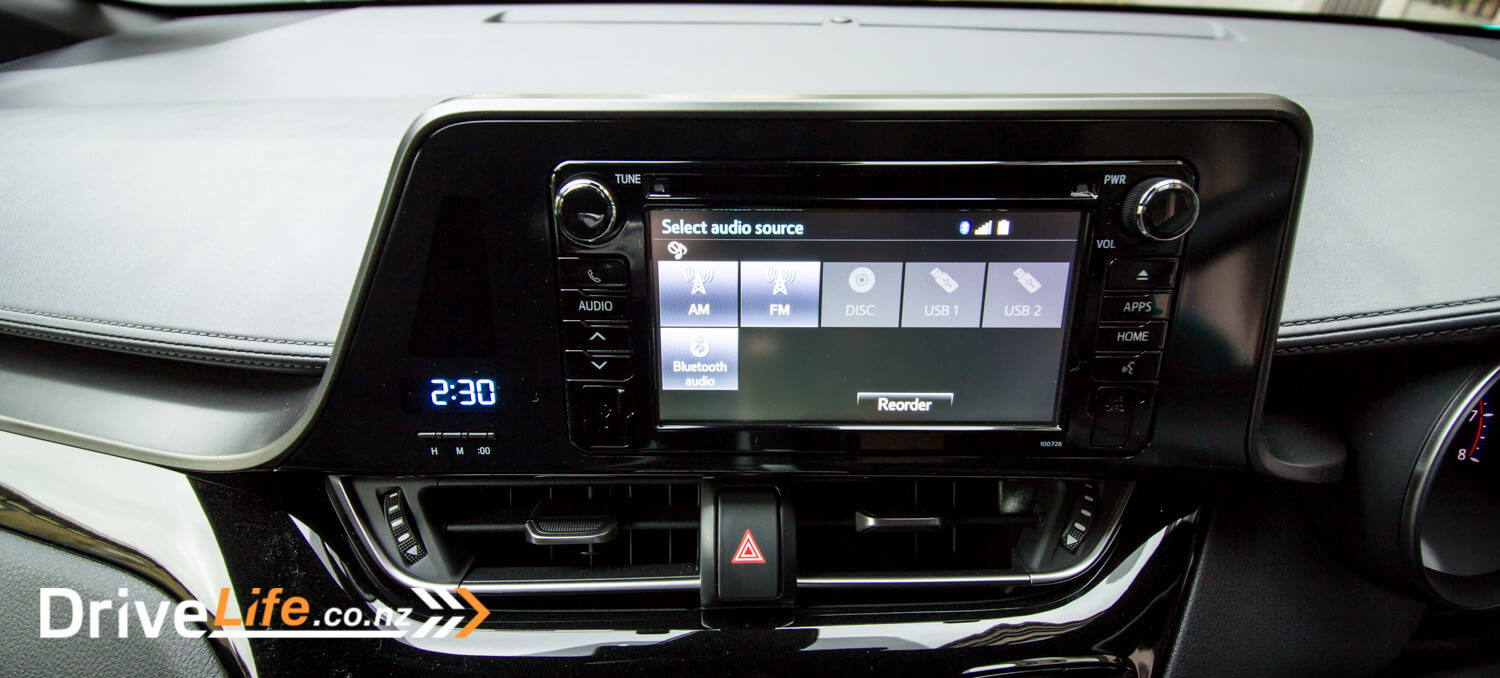
The media system was also a bit slow to react – I found myself hitting the onscreen buttons twice, thinking it hadn’t recognised my touch. Without wanting to be negative about the C-HR, I went to plug my iPhone in; the single USB port is part of the media system, so the cord hangs down. Again – thinking of modern cars here – another USB down on the console would have been a good (and expected) move.
More good stuff; all the windows are one touch up/down, which is always good. The adaptive cruise works well, although it has Toyota’s usual cruise stalk (ug) and the button to change the distance is on the steering wheel. It would make more sense to have all the cruise controls together?
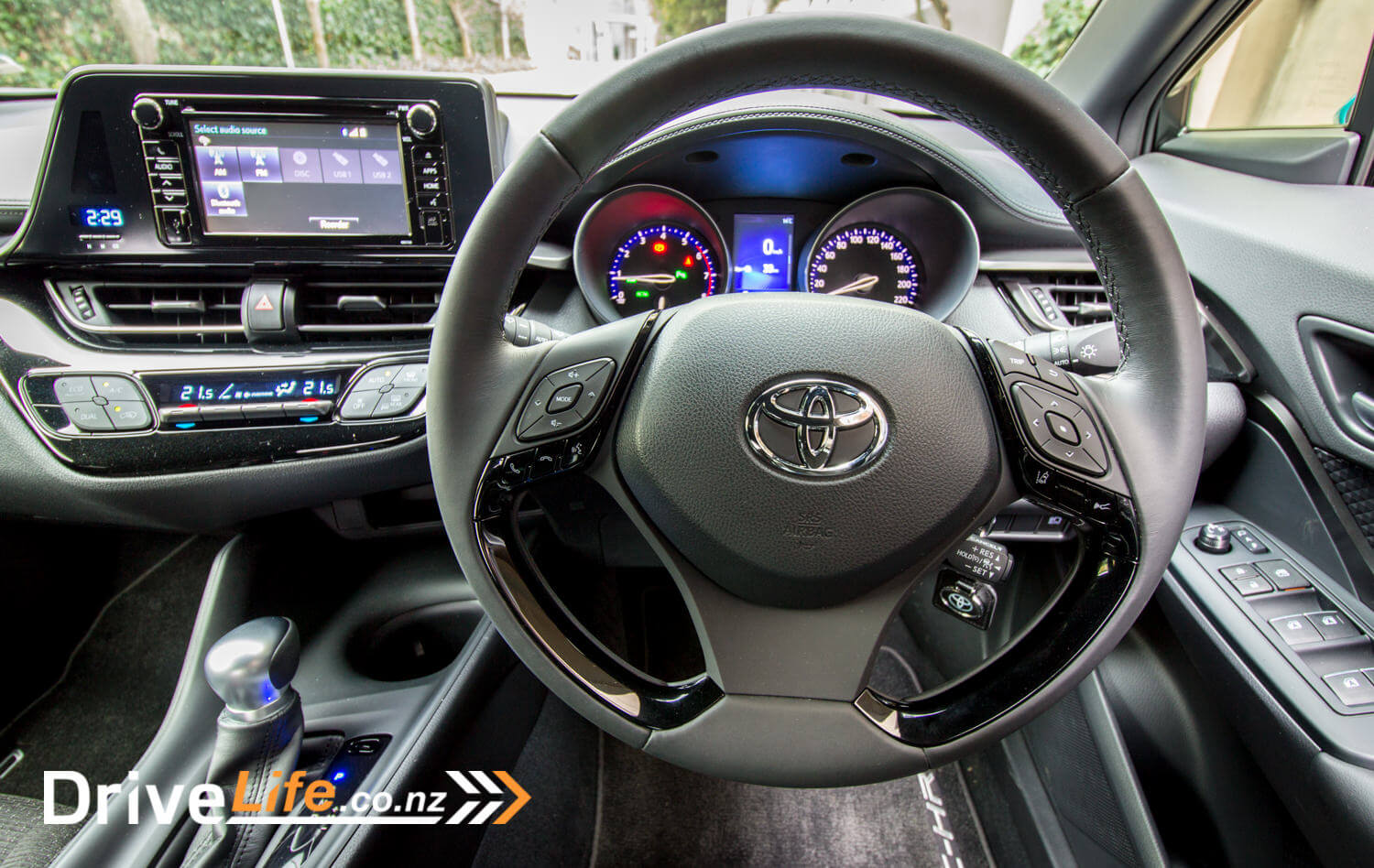
The steering wheel too has ergonomics issues; overall, the feel is great and the size is good. But the buttons for volume up/down (for example) are clustered in a way that I found I couldn’t adjust the volume without actually looking at the steering wheel buttons, which doesn’t seem safe. I found I couldn’t operate any of the steering wheel controls without actually looking at them.
The gauges though are great; nice and clear, and you’d be surprised how many cars are coming out with gauges that you have problems reading quickly.
One thing you may notice is all the hard plastics used in the cabin; they are everywhere you touch. Toyota could take a lesson from Mazda here.
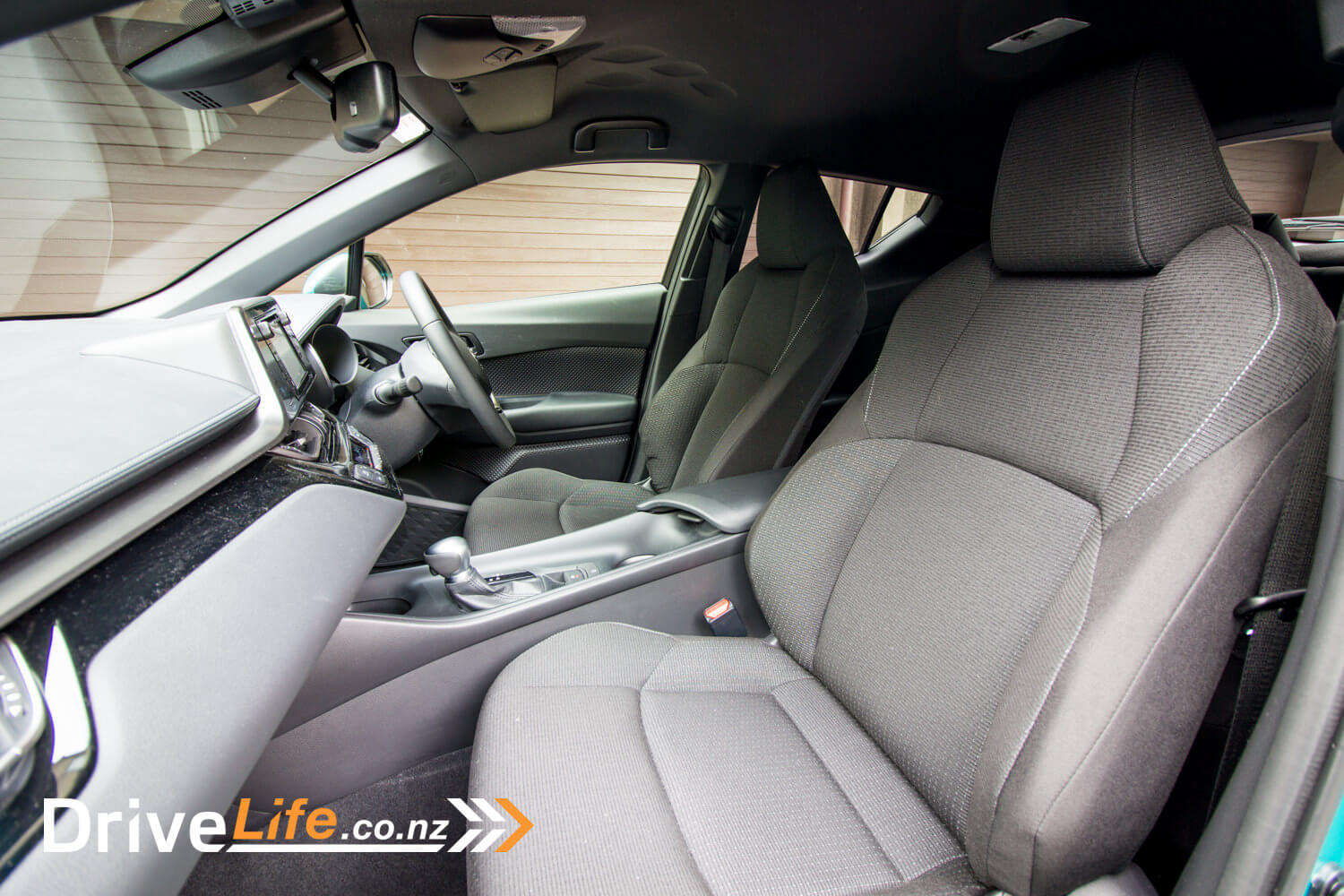
The SatNav works perfectly well, and having SUNA traffic reports saved me at least once. However I couldn’t make the SUNA traffic alerts come up without having a destination. This could have entirely been a user error, but I thought just having the SatNav up should show the traffic alerts at all times.
Back to SatNav; you also get proper motorway signs on the display, with big blue arrows to show the lane/s you need to be in – great stuff. I don’t believe this – it’s going to get negative again – you don’t get turn-by-turn directions in the driver’s information display. This seems like a real fail. The driver information display does have lots of info, you can scroll a long way left or right and then up and down to get a multitude of details or settings, including a digital speed readout, which is always welcome.
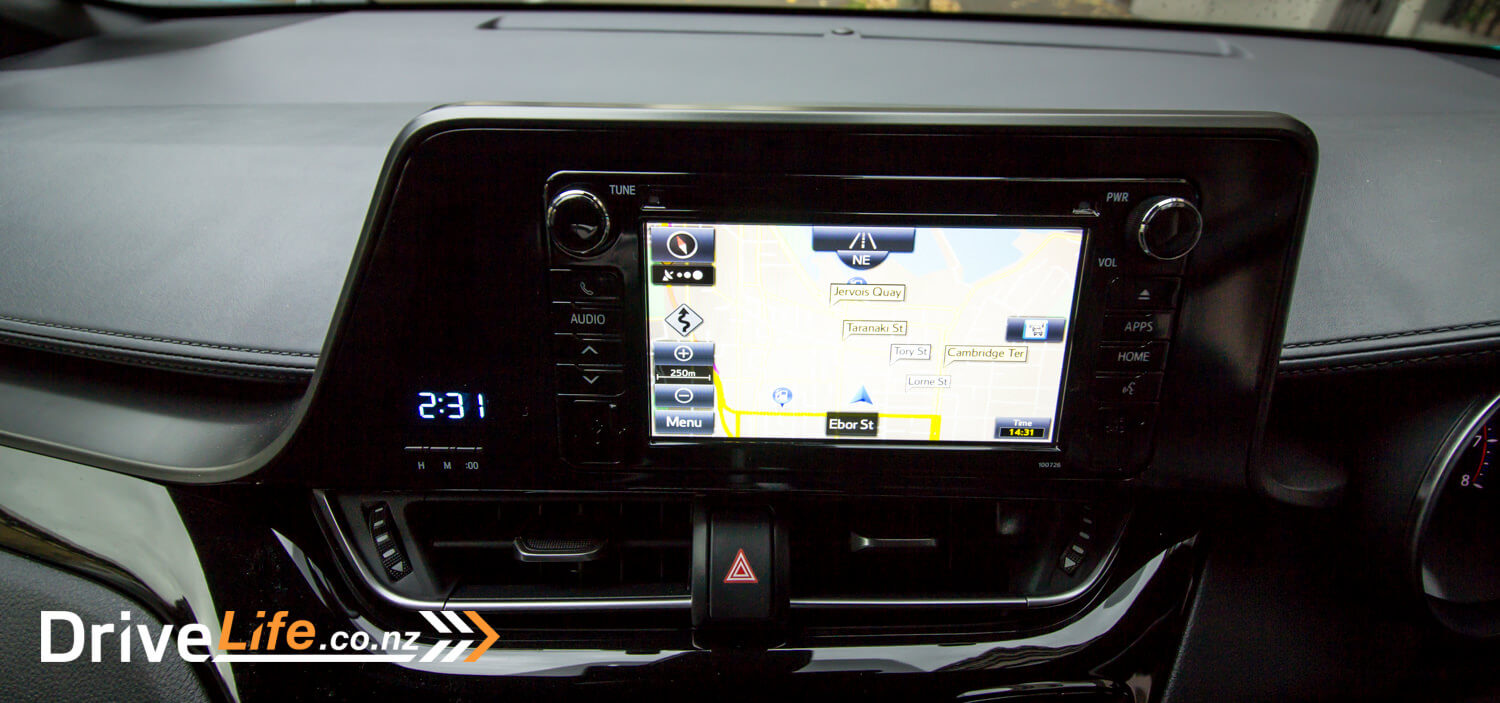
I was surprised too that there’s no Android Auto or Apple CarPlay, no electric seat adjustment, and no leather seating. The C-HR seems to have some good equipment levels, but again; for the space age design, it feels a little old fashioned and under-specced for the money. Comparing to the FWD Mazda CX-3 (with leather model) at $36,595, the Mazda also has heated front seats, an electric driver’s seat, heads-up display AND keyless entry and start. That’s over $1000 cheaper than the C-HR.
One party trick the C-HR has that the CX-3 doesn’t, is the very cool laser image of ‘C-HR’ projected onto the ground when you unlock the car – at last something modern to impress your passengers.

We haven’t discussed rear legroom. It’s not bad, but if your driver is 6 foot or over, rear legroom behind is going to be small children only.
The boot is pretty spacious, at 318 litres with the rear seats up – compare this to the 264 litres for the CX-3. One thing to watch for is the rear door – it’s pretty heavy. Any elderly ladies are going to be struggling to open this one.
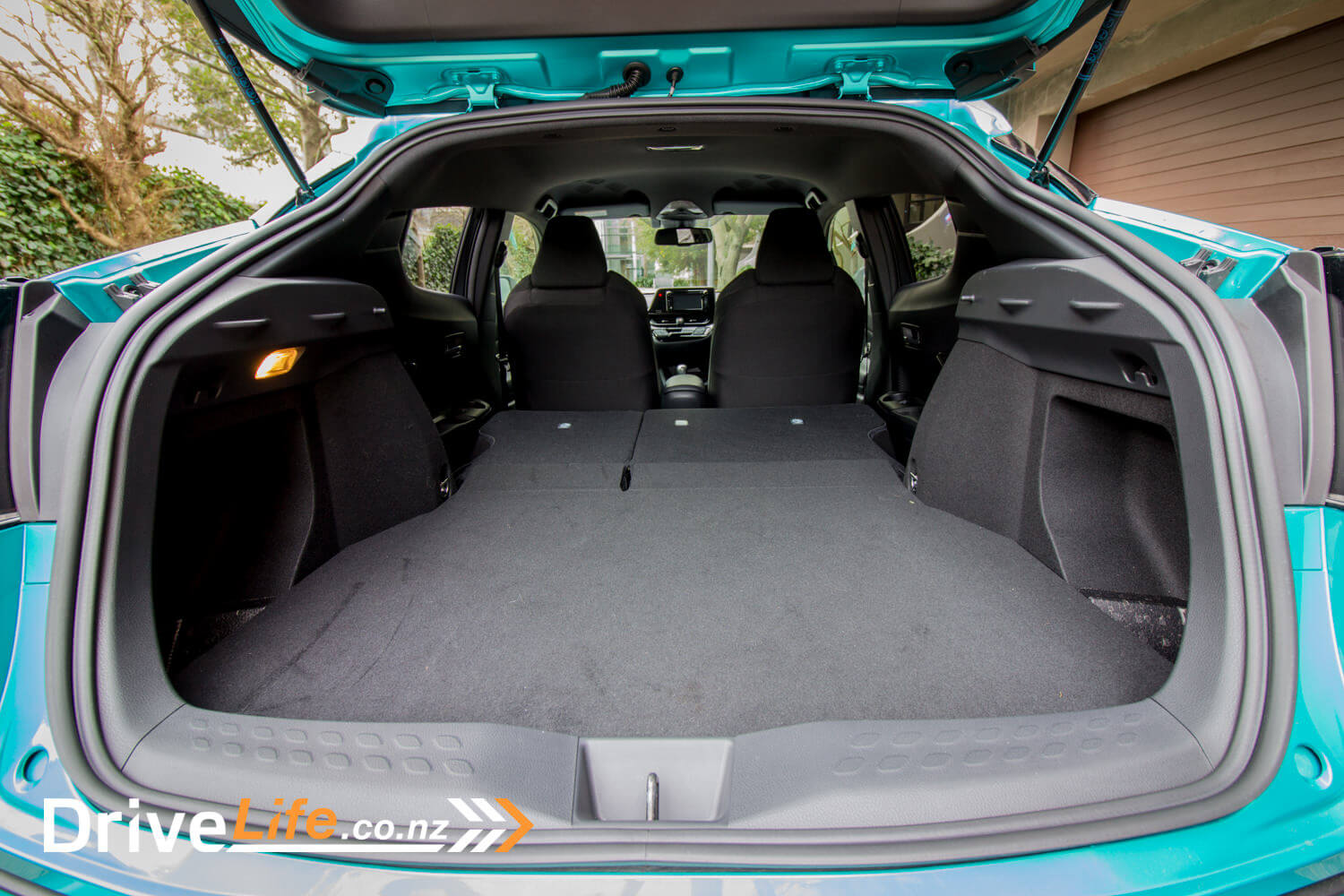
The Drive
During the launch of the C-HR, most people found the chassis on the C-HR to be a highlight. While I found some problems in the interior that weren’t obvious during the launch/drive, the chassis once again proved itself to be extremely well designed. I had to check a few times that Toyota had not sent me an AWD model – this FWD C-HR has almost neutral handling, and totally inspires confidence. Steering, while a little dead at times, is generally good, and the brakes are up to the task.
It is really hard to make the C-HR falter, even mid-corner. This car is a pleasure to drive, and a pleasure to drive on a windy road. The ride impresses too – for a small car, no complaints.
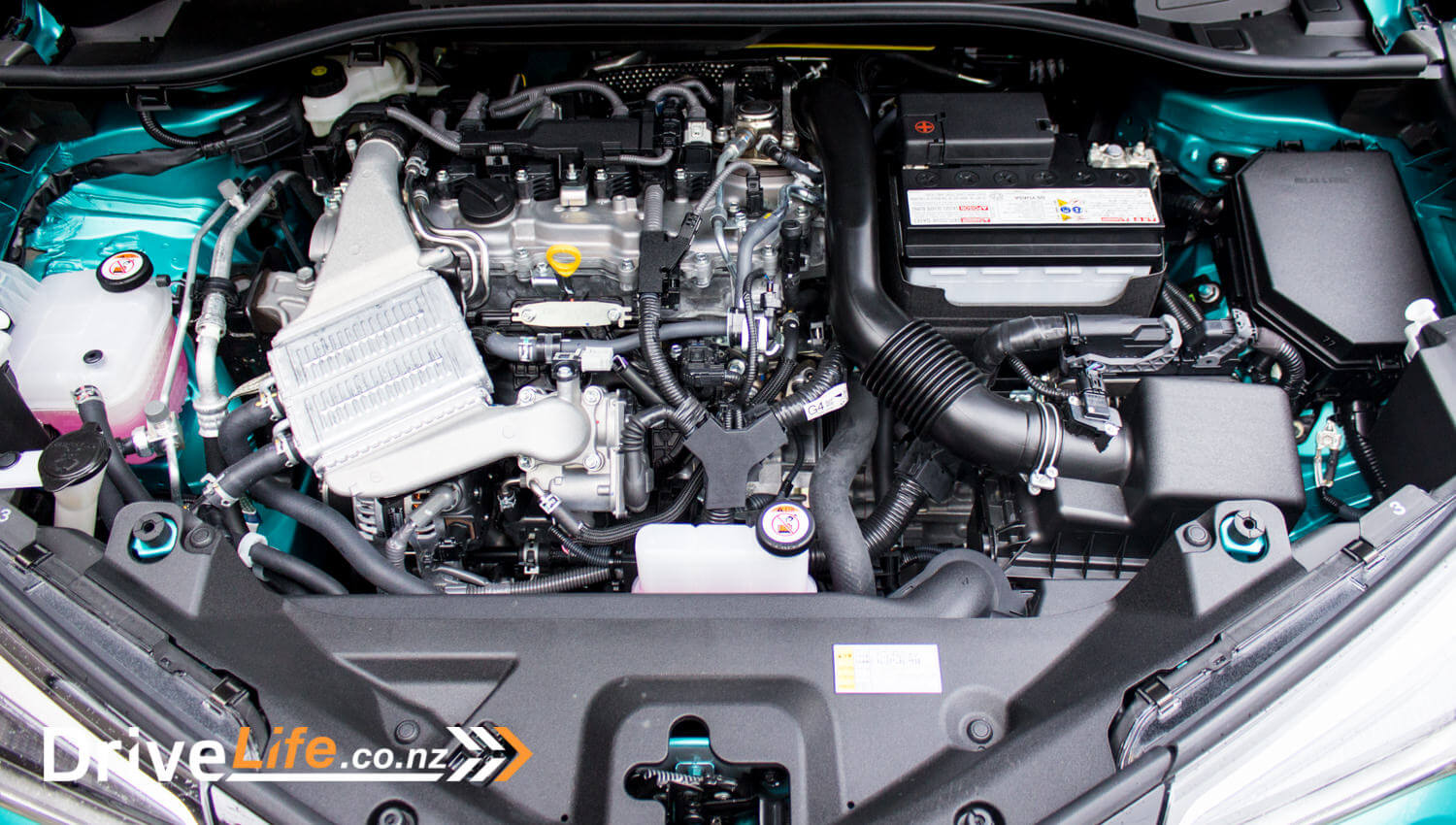
Sometimes a little jiggly at low speeds, but overall the ride is great.
That little 1.2 turbo engine does its best to move things along, and on the whole it does ok. Could it use more power? For sure. I didn’t get a chance to try the car 4-up, but even with 185Nm of torque, I think it would struggle a little. Not helping is the CVT transmission. It’s ok, and it drives better than some CVTs, but you still get that ‘whirrrrrrrrrrrr’ when you give it some gas. I’ve said it before and no doubt will again – as far as a great driving experience goes, a CVT doesn’t cut it for me.
Engine noise is low, and it’s only under heavy acceleration that it really makes itself known. Smoothness of the engine is also a highlight. Toyota have done well here. It’s almost on par with Suzuki’s BoosterJet engine, which is my small turbo engine benchmark.
The C-HR has an electric park brake with auto-hold, and I love auto hold. This is far a safer way to wait at the lights, and means a quicker start when the lights turn green. I just wish manufacturers would devise a system where you don’t have to engage it every time you start the car (although AMG/Mercedes & BMW have).
Road noise is very much present on a coarse chip seal road; this was noticed on the launch as well. At first I thought it was the tyres, but they are Michelins, so these should improve this area. I had passengers commenting on this as well, so it wasn’t just me.
For the daily drive, that little engine makes driving around town a breeze – quick off the mark, quiet and good forward visibility all helps in the daily grind.
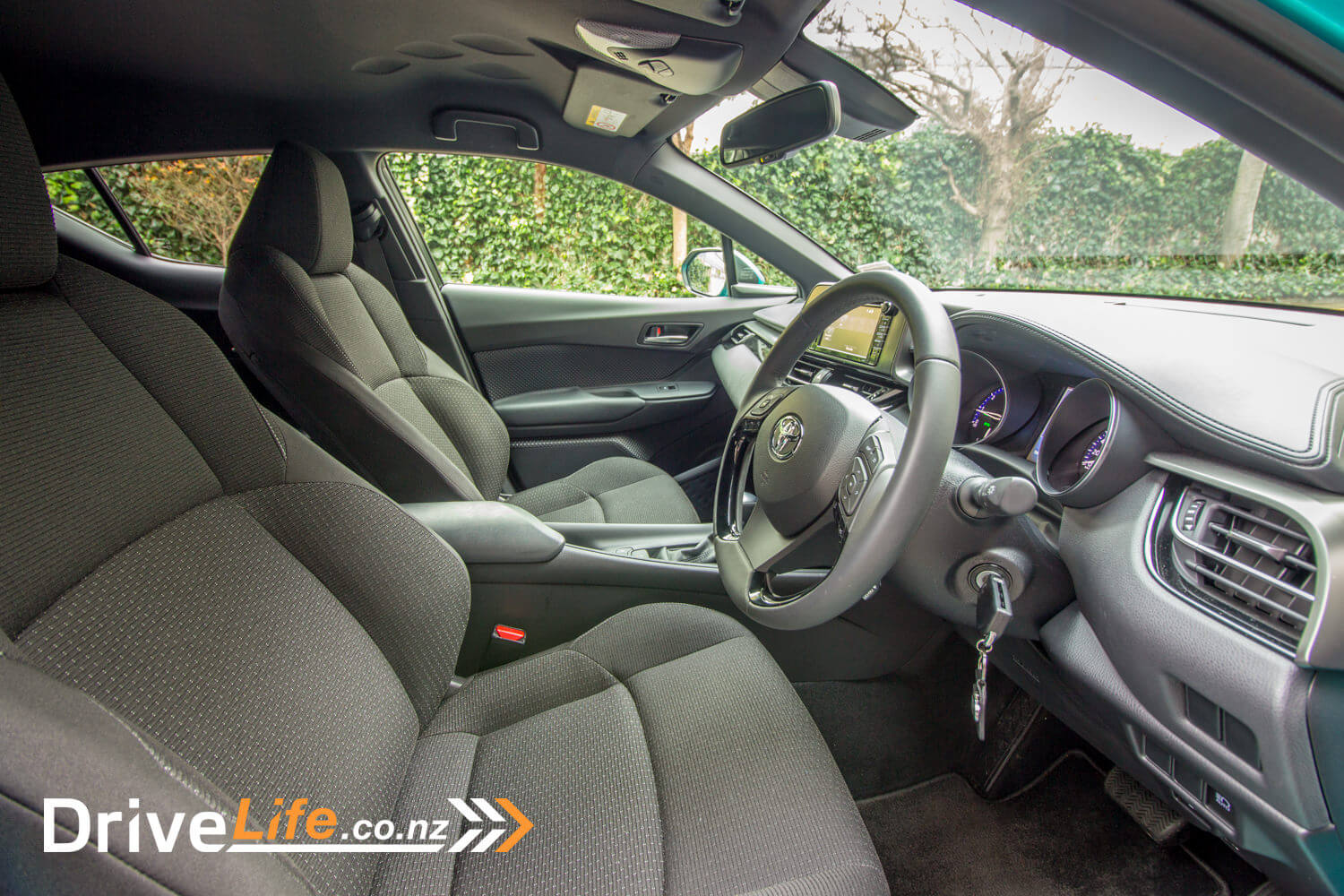
Adaptive cruise control is always welcome, even more so on the C-HR as it can bring you to a full stop – perfect for the commuter.
However, as you can imagine, that rear three-quarter view is not the best. One day, I was trying to back out of an angle park, and there was a car on my left side which blocked my view. I had about a 1’ square view through the tiny rear window on the offside, and it was not fun. In the end I backed out and hoped for the best. You do get Rear Cross Traffic Alert and Blind Spot Detection, and these are essential. That C pillar is simply massive and the rear windows tiny, so it’s almost pointless looking over your shoulder to change lanes – you can’t see anything over there.
While Toyota claims fuel consumption of 6.4L/100km, I managed 6.9 – that’s pretty close!
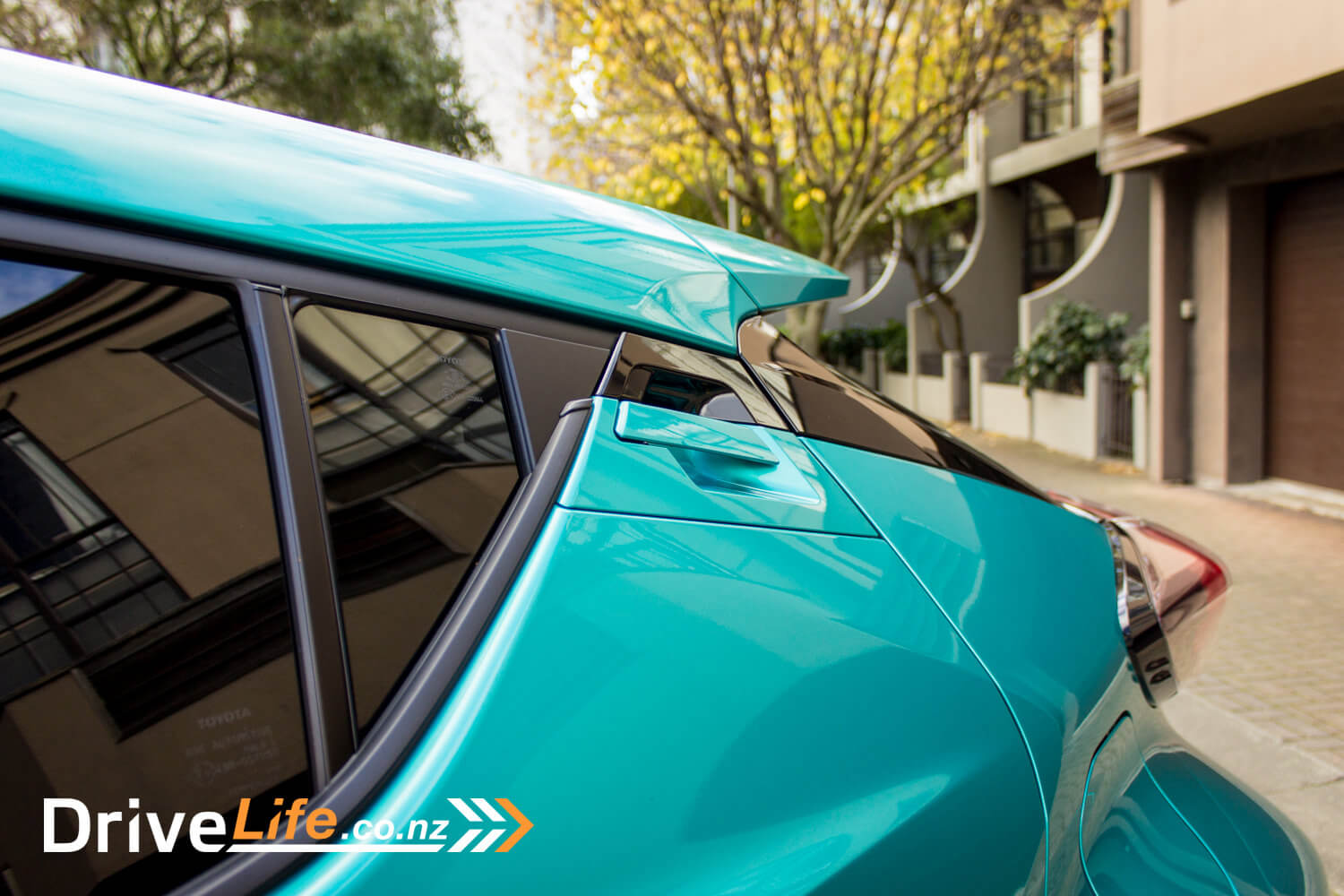
The Competition
We’ve said it before and it still stands true: this was a market segment that didn’t even exist not that long ago. Now, it’s a pick your compact SUV menu.
| Brand/Model
(all FWD) |
Engine
(all petrol) |
Power/Torque | Fuel L/100km | Price – High to Low |
| Mitsubishi ASX VRX | 2.0-litre 4-cylinder | 112Kw/200Nm | 7.6 | $40,590 |
| Honda HR-V | 1.8-litre 4-cylinder | 105Kw/172Nm | 6.9 | $39,900 |
| Toyota C-HR | 1.2-litre 4-cylinder turbo | 85Kw/185Nm | 6.4 | $37,990 |
| Peugeot 2008 GT Line | 1.2-litre 3-cylinder turbo | 81Kw/205Nm | 4.8 | $36,990 |
| Skoda Yeti Monte Carlo | 1.4-litre 4-cylinder | 92Kw/200Nm | 5.8 | $36,990 |
| Holden Trax LTZ | 1.4-litre 4-cylinder turbo | 103Kw/200Nm | 6.7 | $36,990 |
| Mazda CX-3 GSX (with leather) | 2.0-litre 4-cylinder | 109Kw/192Nm | 6.1 | $36,595 |
| Kia Soul Limited | 2.0-litre 4-cylinder | 112Kw/192Nm | 8.0 | $35,990 |
| Renault Captur Dynamique | 1.2-litre 4-cylinder | 88Kw/190Nm | 5.4 | $35,990 |
| SSangyong Trivoli Limited | 1.6-litre 4-cylinder | 94Kw/160Nm | 7.6 | $34,990 |
| Suzuki S-Cross Prestige | 1.4-litre 4-cylinder turbo | 103Kw/220Nm | 5.9 | $33,990 |
| Ford EcoSport Titanium | 1.5-litre 4-cylinder | 82Kw/140Nm | 6.5 | $32,990 |
| Nissan Juke | 1.6-litre 4-cylinder | 86Kw/158Nm | 6.3 | $31,990 |
The Pros and Cons
| Pros | Cons |
|
|
What do we think of it?
On reading this review, I can see I’ve been quite harsh at times, but I think it’s all justified. Was I wearing rose tinted glasses at the launch? Maybe, but I think it’s more based on one day of shared driving doesn’t compare to a whole week of using a car for everyday life.
Toyota will sell lots of these, simply based on the looks. If you want something different and eye-catching, and don’t actually need to use the back seat for long trips, the C-HR is worth a test drive. Some may not like the CVT, and who can blame them. But for most drivers of this car, they won’t care.
I see a bit of a missed opportunity here; Toyota have a stunning space-age design, and yet haven’t taken that space-age design to the interior of the car. No keyless entry and start? Come on Toyota, you can do better than this.

3.0 Chevrons
| Vehicle Type | Compact SUV (‘crossover coupe’) |
| Starting Price | $37,990 |
| Tested Price | $37,990 |
| Engine | 1.2-litre, 4-cylinder turbo petrol DOHC VVTI |
| Transmission | CVT with 7-speed Sport Mode |
| Kerb Weight, Kg | 1,385 |
| Length x Width x Height | 4360mm x 1795mm x 1565mm |
| Cargo Capacity, litres | 318/1140 |
| Fuel Tank, litres | 50 |
| Fuel Economy | Manufacturer’s rating, combined: 6.4L/100Km
Real World: 6.9L/100Km |
| ANCAP Safety Ratings | 5 Stars |
| Warranty | 3 years/100,000 kilometres |


